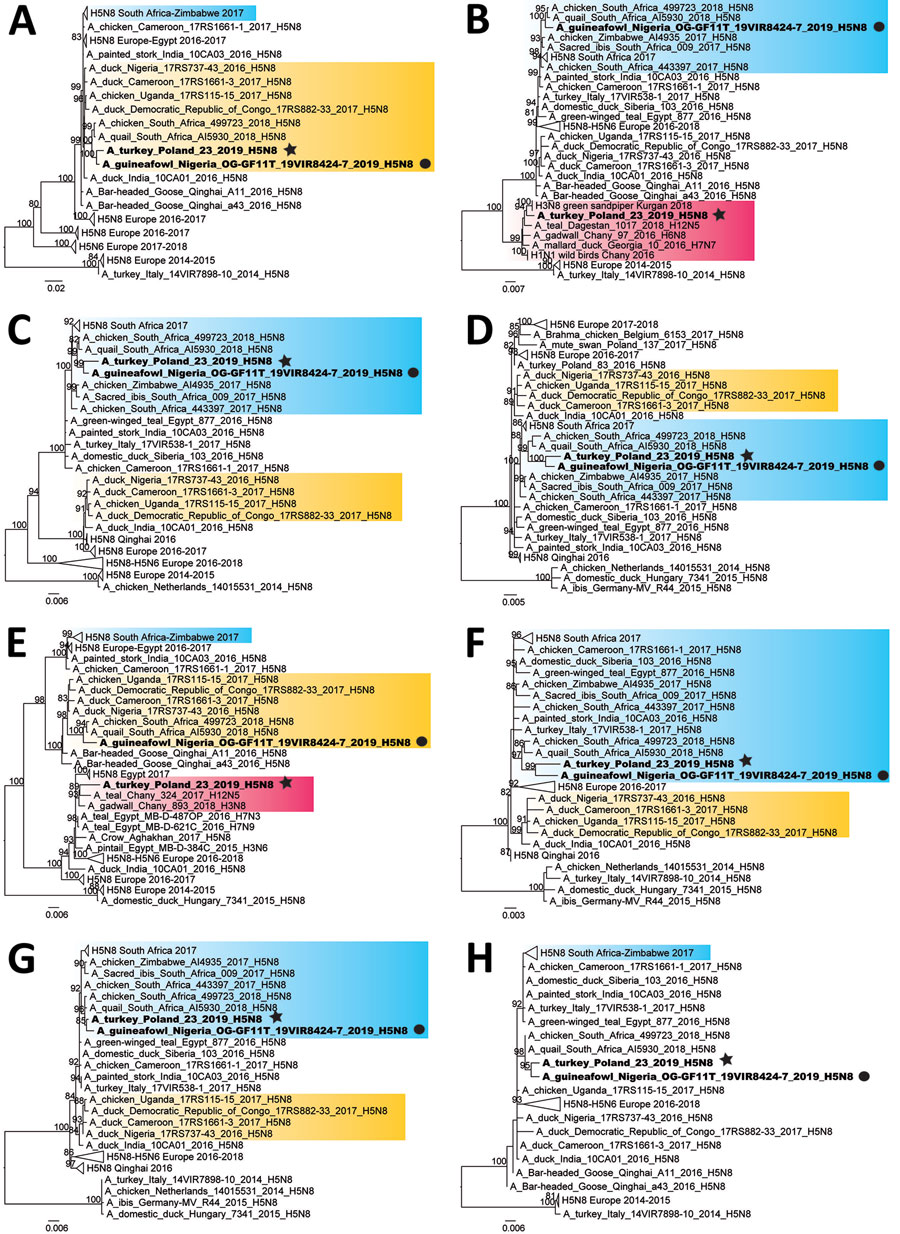Volume 26, Number 7—July 2020
Dispatch
Sub-Saharan Africa and Eurasia Ancestry of Reassortant Highly Pathogenic Avian Influenza A(H5N8) Virus, Europe, December 2019
Figure 1

Figure 1. Maximum-likelihood phylogenetic trees of avian influenza A (H5N8) viruses identified in Poland and Nigeria, 2019. A) Polymerase basic protein 2, C) polymerase basic protein 1, C) polymerase acidic protein, D) hemagglutinin, E) nucleoprotein, F) neuraminidase, G) matrix protein, H) nonstructural protein. H5N8 viruses detected in Poland and Nigeria in 2019 are indicated in bold, A/turkey/Poland/23/2019(H5N8) is indicated by a black star, and A/guinea_fowl/Nigeria/OG-GF11T_19VIR8424–7/2019(H5N8) is indicated by a black circle. Blue box indicates the South Africa 2017 H5N8 cluster, yellow boxes indicate the West-Central Africa 2016–2017 cluster, and purple box indicates Eurasian LPAI viruses. Numbers next to each node represent ultrafast bootstrap supports (>80). Scale bars indicate nucleotide substitutions per site. LPAI, low pathogenicity avian influenza virus.